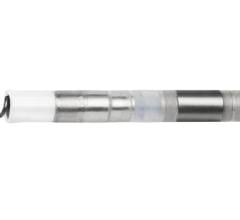The day our May issue went to press, April 26, the Heart Rhythm Society held a telebriefing for the media to announce release of its draft policy recommendations for pacemaker and ICD performance. Final guidelines are expected to be published in the October issue of Heart Rhythm Journal, but I believe highlighting some of Dr. Anne Curtis’ remarks is of immense value to all cardiology practitioners.
Emphasis on clear communication practices is among the standout messages I take away from the recommendations — perhaps because I’ve always preferred clarity to clouding, straight talk rather than empty loquacity.
The need for the Society to take a stand about ICD and pacemaker performance and malfunction mitigation is obvious in view of product recalls last year following some serious adverse patient events, including deaths.
“While the life-saving benefits of pacemakers and ICDs has been confirmed by numerous clinical trials, recent events have raised questions about the effectiveness of the current systems and processes used for postmarket surveillance and analysis of these cardiac devices,” said Dr. Curtis. “Industry communications to physicians and patients about the performance of these devices have also been called into question.”
She stated that physicians are not currently, systematically involved in determining if and when a device safety concern exists or in the response to a safety concern. Of all the document’s recommendations, Dr. Curtis noted two as among the most significant:
(1.) “We suggest that manufacturers establish independent, standing committees of outside experts to analyze device performance reports and to recommend appropriate action.”
(2.) “We recommend the FDA establish standing postmarketing advisory committees to analyze data on device performance and to suggest actions to address device malfunctions.”
Simple, Straight and Standardized
When so much is at stake, communication related to device malfunction should not be clouded with complex and inconsistent terminology, the Society asserts. Device manufacturers and the FDA are therefore urged to use identical terminology when classifying device malfunction.
Simple language should be used by the FDA in communicating important malfunction information, stated Dr. Curtis. She also emphasized how the present absence of a standardized reporting format and of a standard mechanism for FDA classification of all advisories creates confusion, the first hindering physician and patient understanding of key clinical issues at stake and the second potentially leading to over or under emphasis on any particular advisory issue. Manufacturers must contribute to the solution, she indicated.
“In addition to the physician advisory notification letters, we suggest that manufacturers use a standardized physician device advisory notification format for all industry advisories to physicians regarding potential device malfunctions.”
What’s Your Story?
In the next issue of Diagnostic & Invasive Cardiology, we will cover the prevention and treatment of heart failure. If you are a physician who is involved in the advances of heart failure therapy, please call or email me during the month of July. We would like to hear about your work and share your story with your peers in this DAIC-exclusive feature.
Meanwhile, thanks for reading this issue!


 March 26, 2024
March 26, 2024 








